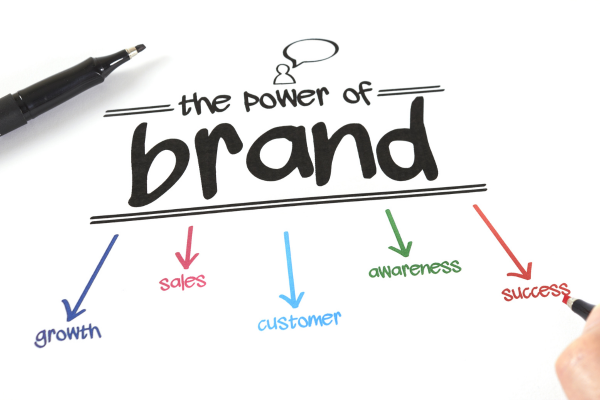What exactly is customer loyalty?
The act of continually favouring a company’s goods and services above those of its rivals is known as customer loyalty. Customers who are devoted to one business are less susceptible to availability or pricing fluctuations. They would rather spend more money and get the same high-quality service and goods they have come to expect.
When a business consistently meets and exceeds customers’ expectations, it succeeds in building customer loyalty. Research shows that trust forms the foundation of brand loyalty, with 83% of consumers emphasizing its importance. Likability and trustworthiness are key factors in fostering loyalty, as customers are more inclined to make repeat purchases when they have confidence in a company.
Why is client loyalty crucial?
The significance of client loyalty affects practically all key company metrics. Without satisfied clients who keep making purchases from you, the company won’t last. As we’ll see below, acquiring new consumers is generally more expensive, and they don’t typically spend as much as devoted, recurring customers do. The success of a firm depends on retaining clients. And this is the reason why making quick money doesn’t work. Customers who are dependable to your business help you expand and maintain high revenues.
Greater client loyalty aids business expansion
While repeat customers who spend more money are beneficial for business, loyal consumers also reap other, less evident advantages.
Similar to the traditional metaphor of the leaky bucket. Think of a company as a bucket. Customers enter and fill the bucket to the brim. A profitable company has a full bucket of clients.
Imagine, though, that the bucket has a hole in it. Clientele that poured into the bucket begins to trickle out of the hole. Churn is the term for client loss, and it significantly hinders corporate growth. Even if you can find a way to fill the bucket more quickly, you will still be losing worthwhile clients.
Fixing the problem (or enhancing customer retention) entails keeping more clients on board. Business profits grow by 25%–95% for every 5% increase in client retention.
Churn wouldn’t be such a big concern if it cost the same to replace the clients lost due to the leak. Unfortunately, it costs significantly more to bring in new clients than it does to keep selling to the same ones. According to estimates, converting new consumers will cost five times as much as doing so with current ones.
Loyal customers facilitate business expansion.
Devoted consumers also refer their friends and family. If you’re wondering if referrals are really that crucial to your financial line, take a look at these statistics from Referral Sasquatch:
New referral clients have a lifetime value that is 16% higher than non-referral consumers. The reason for this is probably that they already have a favourable image of the company, and friends are more likely to suggest “perfect fit customers” or those who they are certain will get something from your good or service.
83% of US internet consumers are influenced by social media posts when making decisions.

B2B businesses with recommendations have conversion rates that are 70% higher.
Your lead stream can grow thanks to devoted clients.
Having Loyal Customers Means Higher Profits
A company needs to have more revenue than expenses to operate. If it costs $100 to turn a prospect into a client, they must spend at least that amount with your company before you break even. The Customer Acquisition Cost (CAC) will frequently comprise expenses for software, sales labour, and marketing spending. These expenses add up: According to Bain & Company, most firms need to keep clients for at least 12 to 18 months to recover their acquisition costs. Customer loyalty is not only a good notion; it is essential to the survival of the company.
One of the best investments a company can make is to focus resources on enhancing client loyalty. The earnings impact of a 2% improvement in customer retention is equivalent to a 10% drop in operational costs. (On the Edge of Chaos’ Emmet Murphy and Mark Murphy are in charge.) Spend money on retaining clients instead of cutting back on them because the benefits outweigh the costs.
Finally, recurring consumers are frequently the most lucrative. According to McKinsey, returning e-commerce customers spend more than twice as much as new ones ($52.50 on average for repeat customers against $24.50 for new customers in their carts). By upselling to current clients and adding more value as the account expands, SaaS organisations can experience a similar gain.
Increased profitability and overall business performance result from putting a strong emphasis on the value of client loyalty.
Customer loyalty and superior customer service
Can the customer service staff significantly contribute to increasing client loyalty? Absolutely.
Customers adore transacting with businesses that provide excellent customer service. Customers would pay more, according to a new Harris Interactive survey, if they could get outstanding service. As a result, businesses that provide excellent customer service will have greater customer loyalty and experience fewer client losses as a result of pricing competitors.
Teams that provide customer service are also crucial in reducing disloyalty. Eighty-nine per cent of respondents who had recently changed from one business to its rival cited bad service as the reason for their decision in the same Harris Interactive survey. We frequently discuss how high-effort experiences might turn customers away.

Teams in customer service that track customer effort scores can significantly reduce the amount of friction and boost customer loyalty.
While loyal customers aren’t always the outcome of customer satisfaction, dissatisfaction almost surely does.
Building trust, however, is a process that takes time and effort. Building trust is a labour-intensive process that calls for persistence, consistency, and reliable performance. Only then will you have a brand that will encourage repeat business, and DigAptics is here to assist you and provide all such outcomes.


